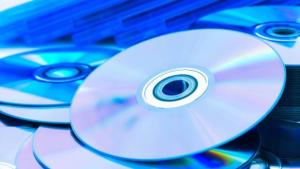The Best Way to Backup Photos

Losing data is catastrophic for most people, but it is especially disastrous if you’re a professional photographer storing client photos.
What is the best way to backup photos? How can you cover all your bases when protecting your media? Here’s what our experts suggest:
1. The Best Way to Store Photos: Keep Multiple Copies

Keep organized copies of your work in multiple places:
- Get Custom CD Printing and backup your photos onto high-quality CDs or DVDs. The easiest way to do this is to automate your CD or DVD burning. Provide your client with multiple copies of their own photoshoot, and store copies for yourself in case your client loses their discs later.
- Keep a backup of your photos on an external hard drive. Hard drives will eventually fail so having an external hard drive in addition to your computer is a safe bet. After every photoshoot, let your new photos transfer to the external hard drive, or use Mac’s Time Machine application to sync files automatically for you.
- Store your discs or hard drives in an offsite location, in case of fire or theft. A safety deposit box kept in an air conditioned building would be ideal.
- Use the cloud as another backup source. You can sync files automatically with affordable programs like Dropbox.
3. Label and organize your digital and physical files

Adhere to a naming system for all of your work so that you can easily search for a photoshoot on your computer.
To keep your physical copies clearly labeled and organized:
4. Custom CD Printing - make your discs represent your brand or the event photographed

Getting a custom design printed on the cover of your disc will represent your brand, professionalism, and quality. You can modify your design for each event, keeping your discs identifiable and organized. The easiest way to do this is to go through a company who can automate batch printing and also provide data duplication.
To a budding photographer, burning discs at home may still seem like a reasonable option, but it’s actually an expensive workaround: the process requires a watchful eye, patience, and time that could instead be spent working with clients - and in the end you won’t have quality professional printing on the cover.
5. Consider the lifespan and costs of your backups
We suggest using discs for your backups because they are an affordable option with a long lifespan, compared to a hard drive which have a lifespan of up to 6 years. Plus, the customization options with discs are far greater than hard-drives and USB drives: with custom printing and serialization/barcode printing, each disc is branded, identifiable, and easily traced.
Check out our chart comparing various media formats and their cost per gigabyte - DVDs and Blu-Ray discs are the most affordable option with the longest lifespan:
| Media Format | Lifespan | Cost per Gigabyte |
|---|---|---|
| CD-R | ~100 to 200 years | .25 cents / .54 cents with custom printing |
| DVD-R, and DVD+R discs | ~100 to 200 years | .04 cents / .09 cents with custom printing |
| Blu-Ray Discs | ~100 + years | .04 cents/ .05 cents with custom printing |
| Hard-drives | Up to ~6 years | .03-.07 cents |
| USB Drives | 5-10 years | $0.50 cents - $4 |



